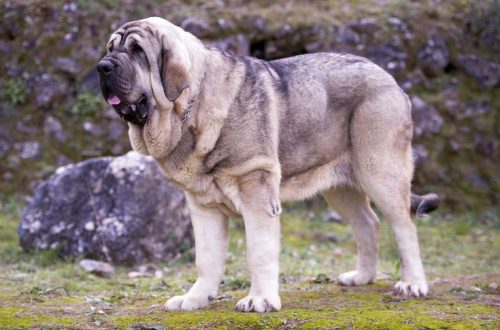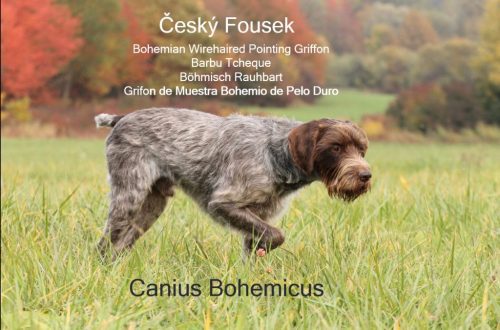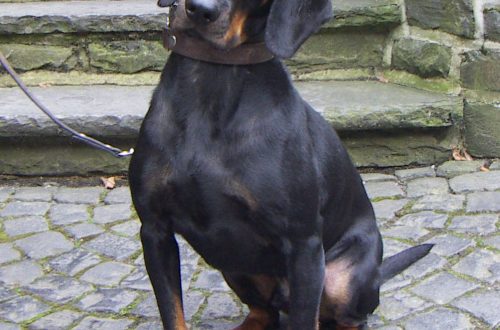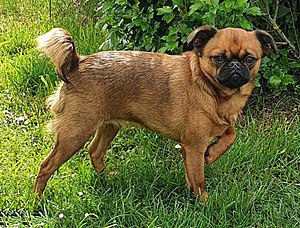
Petit brabançon
Other names: Brabant Griffon , Small Brabancon , Smooth Griffon Petit Brabancon is a decorative breed belonging to the group of small Belgian dogs. Affectionate and inquisitive, Brabant Griffons bond strongly with their owners.
Contents
- Characteristics of Petit brabançon
- Basic moments
- The history of the Petit Brabancon breed
- Video: Petit Brabancon
- The appearance of the petit brabancon
- The character of the petit brabancon
- Training and education of Petit brabançon
- Care and maintenance
- Health and disease of petit-brabancons
- How to choose a puppy
- The price of a petit brabancon
Characteristics of Petit brabançon
| Country of origin | |
| The size | |
| Growth | |
| Weight | |
| Age | |
| FCI breed group |
Basic moments
- Petit Brabancon has a balanced character: he will never rush at animals or passers-by without a reason.
- The Brabant Griffon is curious, sociable and playful. The pet gets along well with small children, positively perceives practical jokes and does not take offense at the owners for a long time.
- The four-legged natives of Brabant quickly get used to the families in which they live, and this attachment is forever. A long separation from the owners can hurt their delicate psyche, so if possible it is better to take Griffons with you on trips.
- As they grow older, the petit-brabancons do not lose their puppyish playfulness, remaining “children” in their souls. Representatives of the breed are very sociable and charming dogs. They love to be the center of attention all the time.
- The level of development of the petit brabancon roughly corresponds to the intelligence of a 3-year-old child. This means that the dog lends itself well to training and retains the skills instilled in it in the future.
- The Brabant Griffon gets along with any animals in the house.
- The petit-brabancon subtly feels the mood of its owner and adapts to it like a true companion. If the owner is sad, then the griffon will also be upset, and if it is fun, then he will readily share moments of joy.
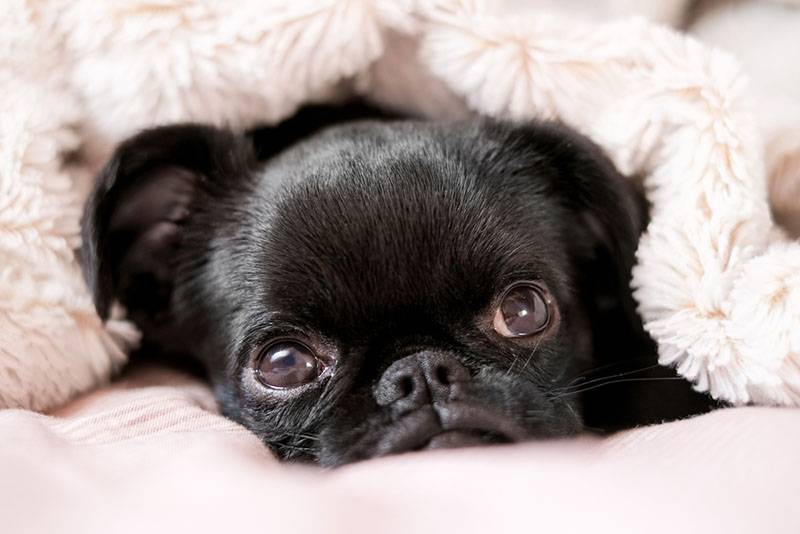
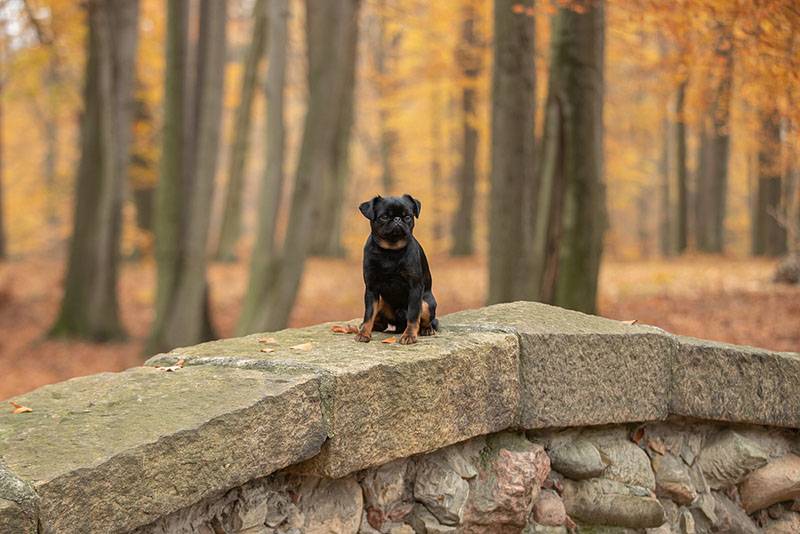
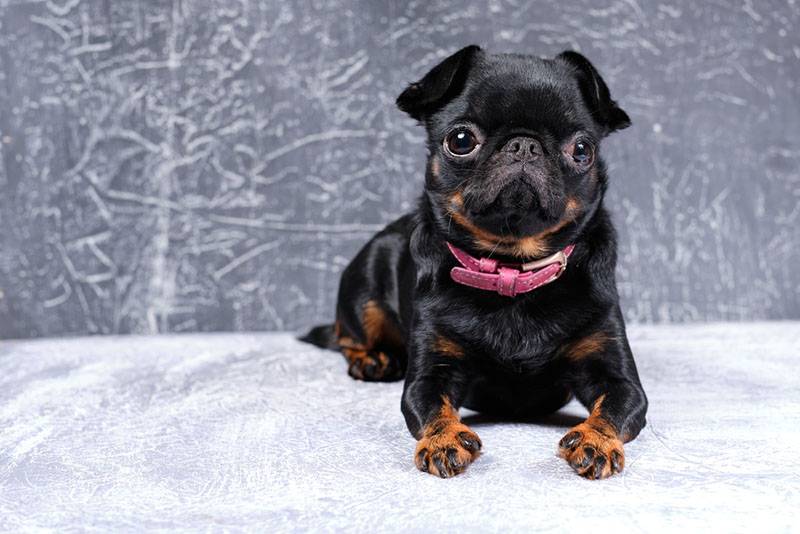
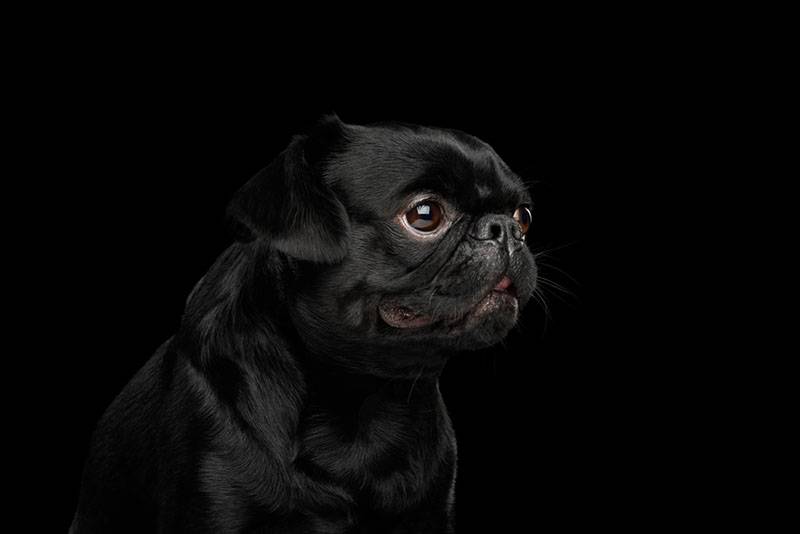
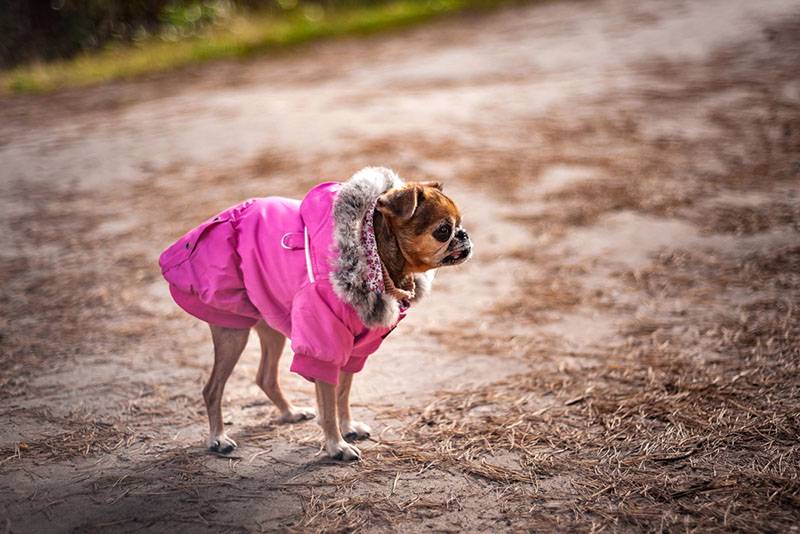
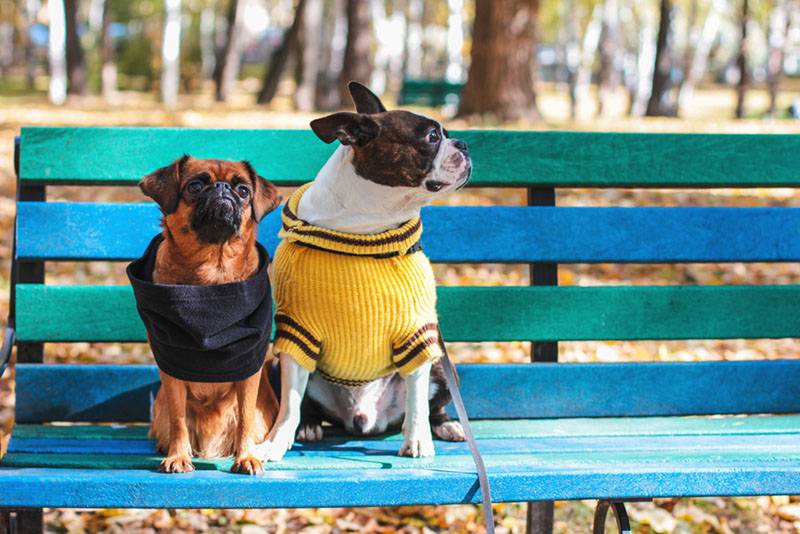
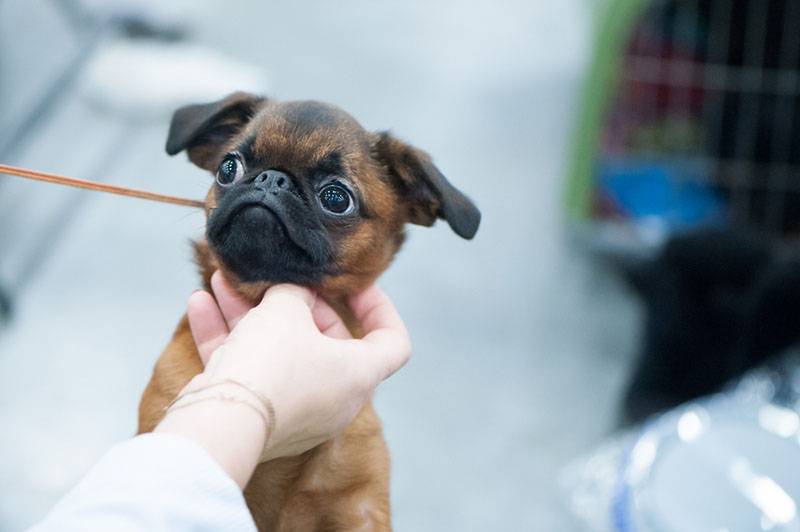
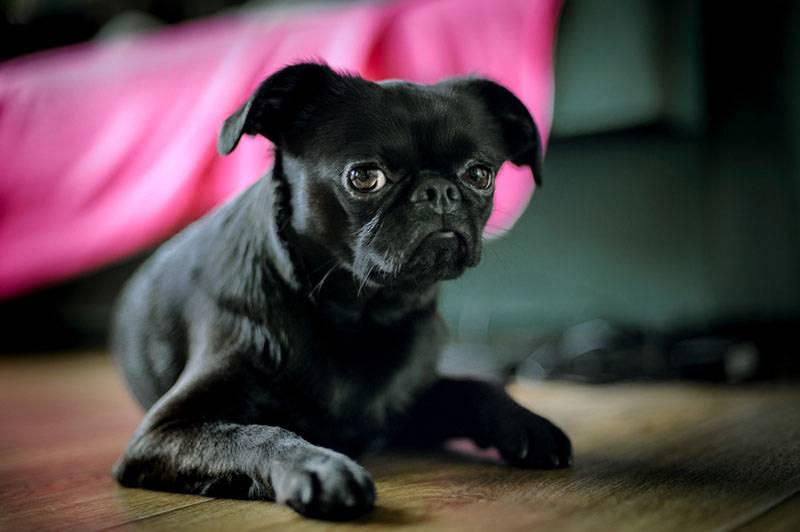
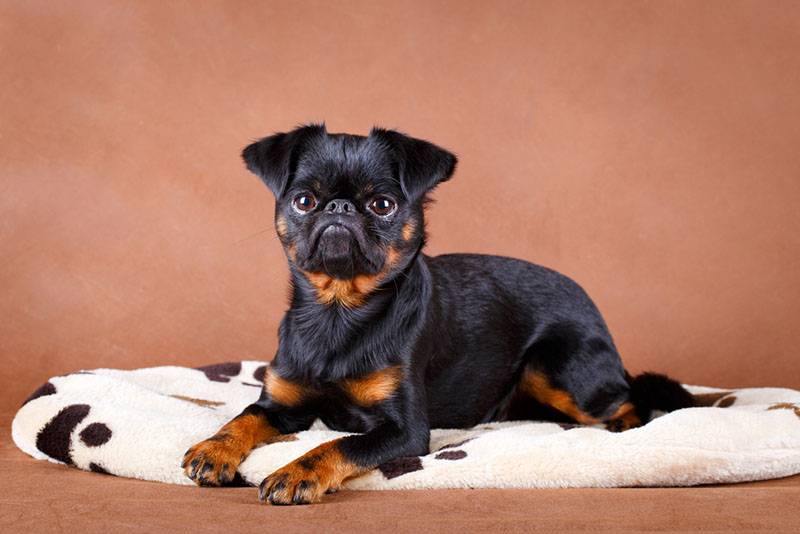
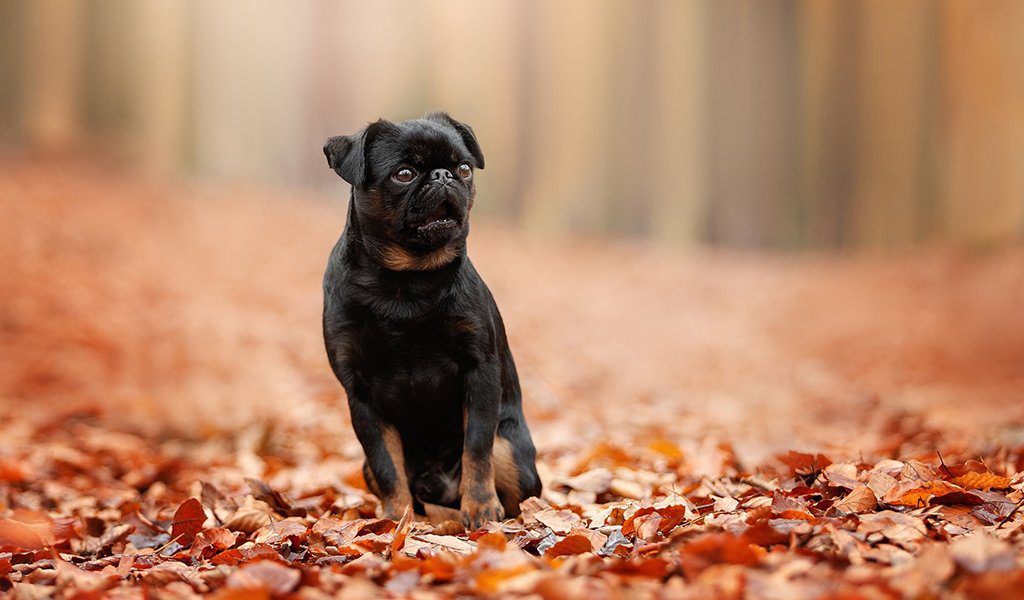
Petit Brabancon is a miniature companion dog with large expressive eyes and active lively facial expressions. This breed is distinguished from the Belgian and Brussels Griffons by the absence of a “beard” on the muzzle and shorter hair. Brabancon has a calm, but at the same time proud disposition and obeys only his master and members of his family. Despite its small size, it is a strong dog with strong bones, agile and at the same time graceful in its movements. By nature, the Brabant griffon is vigilant and courageous – he is definitely not one of the timid dozen!
The history of the Petit Brabancon breed
The distant ancestors of all griffons lived in Europe as early as the 15th century. As a result of interbreeding, Griffons became owners of two types of wool: Brussels and Belgian can boast of hard hair, similar to the hair of an Irish terrier, and Petit Brabancon – smooth, reminiscent of pug hair . One of the characteristic features of the Brabant Griffon is the upturned muzzle. It is easy to read the whole gamut of emotions.
The modern petit-brabancon is a collective image, in which there is a little bit from various breeds. By the way, that very unique muzzle – short, a bit reminiscent of a monkey – is inherited from the German Wirehaired Affenpinscher. But this little native of Brabant owes an elegant color to the Cavalier King Charles Spaniel .
The new breed so captivated the aristocratic circles, especially the crowned heads, that it quickly gained immense popularity. Its representatives lived at palaces, slept on silk pillows, rode with their high-ranking masters in carriages, and even had their own servants. In those distant times, there was not even electricity, not to mention active pastime in our understanding, so the petit-brabancons entertained their aristocratic owners for hours with fun games, and warmed them in bed on cold nights. The Brabant griffons were especially appreciated by single ladies who were disappointed in the strong field and were already desperate to ever meet love. Funny and always positive, these dogs added color to their lives. In addition, griffons practically did not leave wool on expensive dresses.
It was soon noticed that the Petit-Brabancons have a “feline” passion unusual for dogs – to catch small rodents. From that moment on, the cheerful companions of single ladies became indispensable favorites at the courts of the most august persons. They were trusted to protect the royal chambers and carriages from rats and mice.
In 1880, the World Dog Show took place in Brussels. Despite the solid age of the breed, which by this time was already two centuries old, the Petit Brabancons took part in such an event for the first time. The debut turned out to be successful: they won not only enthusiastic applause from the public, but also high marks from the judges. So the breed began its ascent to true fame and recognition. But, as often happens in such cases, the pursuit of profit has made its own adjustments. Wanting to sell more individuals, negligent breeders increased the number of livestock to the detriment of the quality of the exterior of the royal dogs.
It is not known how the further fate of the Brabant griffons could have developed if it were not for the Duchess Henrietta Marie Charlotte Antoinette, better known as simply Henriette of Belgium. She was the eldest daughter of Count Philip of Flanders of Belgium and his wife Maria of Hohenzollern-Sigmaringen, niece of King Leopold II of Belgium and sister of King Albert I. At the beginning of the last century, she did a lot to rehabilitate the breed. Thanks to her efforts, the purity of the Petit Brabancon stock returned to its previous values.
After some time, the Belgian authorities allowed the sale of elite puppies abroad. Then the Second World War broke out, threatening the extinction of many breeds of dogs, including miniature ones. Unfortunately, the petit-brabancons were no exception. They were saved from complete extinction only by the fact that some individuals lived in the UK and the USA. After the war, breeders joined in the restoration of the breed, and it was saved. True, some changes took place in its appearance, and in the updated “design”, the Brabancons have survived to this day. The breed standard was revised in September 1963 and also in May 2003. The new appearance has become so familiar and loved by fans of the breed that many do not even imagine that the small Brabancons looked somehow different than today.
Petit Brabancons came to Russia from the USA only in 1993. The first specimens became the ancestors of the breed in our country, they began to be bred in St. Petersburg, in the nursery “Nevsky Hobbit”. By 1999, the total number of Brabant Griffons in the Russian Federation was already 85 individuals.
Video: Petit Brabancon
The appearance of the petit brabancon
Petit Brabancons are small, decorative, “lady’s” dogs. Due to their small size, a deceptive impression can be created that they are weak and fragile. In fact, this is not so: the physique of the representatives of this breed is strong. The appearance of the Brabant griffons is quite eccentric, it harmoniously combines the originality of forms and graceful movements.
The height at the withers of adults can vary from 16 to 26 cm. The weight of the natives of Brabant reaches values from 3.5 to 6 kg. The breed standard establishes the following important proportions: the length of the body from the buttocks to the shoulder should correspond as closely as possible to the height of the dog at the withers.
Many people think that within the breed there are varieties such as “mini” and “standard”. This is not true. The Petit Brabancon breed is one, there are no “fractions” in it. If there are some differences, then they are insignificant and are associated with genetics, the sex of the animal, the structure of muscle and bone tissue.
Head
The head is the most expressive part of the body of the Petit Brabancon, it is also the most characteristic, distinguishing it from other breeds. It’s quite large compared to the body. The skull is rounded, wide. The forehead is convex. Stop is clearly defined.
The muzzle against the background of the head is short, its length does not exceed 1.5 cm, while visually it can look longer due to the absence of the so-called “beard” – long hair in the area of the jaws and chin. The muzzle is upturned. If the upper line of the nose is below the line of the eyes, this is considered a significant defect in the breed.
Teeth
It can be said that the Petit Brabancon mouth is always locked, that is, neither teeth nor tongue should be visible. The width of the jaws, that part of the chin that protrudes forward, is also of great importance. A healthy individual should have a complete set of incisors.
The lower jaw has a characteristic upward curve. It is wide and protrudes beyond the upper jaw, but at the same time not pointed. The incisors of each jaw should form a straight line so that they are parallel to each other.
Petit brabançon Eyes
The eyes of the Brabant griffons are large, round in shape, wide apart, and at the same time they are not protruding.
The eye color is brown, and the darker it is, the better. The edges of the eyes should be black, ideally the whites are not visible.
Ears
The ears of the petit-brabancon are small, set high, and there is a sufficient distance between them. If the ears are not cropped, they will be half upright and hanging forward. Cropped ears are fully erect and “provided” with sharp tips.
The breed standard equally allows both cropped and uncropped ears, although too large are undesirable for the reason that they will hang on the side of the head.
Nose and lips
The nose is wide, black in color, the nostrils are wide open, located on the same level with the eyes. The tip deviates back in such a way that, when viewed from the side, the nose and forehead will appear to be on the same plane.
The lips are also black and close together. The upper lip covers the lower lip without sagging. If the upper lip is excessively saggy, this spoils the human expression inherent in the representatives of this breed on the muzzle.
Neck
The neck of the Brabancon is of medium length, while harmoniously blending with the shoulders of the forelimbs.
Petit brabançon Frame
The length of the body and the height at the withers are almost identical. This creates a visual impression of a small, but still strong dog with a characteristic square shape. The withers themselves are somewhat raised.
The loin is short, slightly convex, with a developed muscular corset. As for the back as a whole, it is short, straight and strong. The croup is also straight, wide and somewhat sloping.
The chest is well let down to the elbows and is also broad. The sternum is distinguished by a clear expression; when looking at the dog from the side, it seems that the chest protrudes somewhat forward.
The ribs are not strongly convex, but not flat either. They are well springed. The underline is formed by a slightly tucked up belly. The groin line is clearly defined.
Tail
The tail of the petit-brabancon is set high and carried upwards. At the level of two-thirds, it is usually stopped. If desired, you can leave the tail of natural length. In this case, it will be directed upwards, but the tip will “look” in the direction of the back, but it should not touch it or twist.
limbs
The forelimbs are parallel to each other. They are quite widely spaced, they are distinguished by a good skeleton. The elbows are close to the body.
The paws are round, small in size, not turned in or out. The wrists are strong, the fingers are tightly clenched. However, in no case should they be spliced. Paw pads are thick, and the darker they are, the better. Brabancon’s claws should be as dark or completely black as possible.
The hind limbs are parallel to each other, they are distinguished by strong bones. The angles of the hind and fore limbs are balanced. The hocks are characterized by a normal set, they are strongly lowered. The paws should be the same as on the front legs. The presence of dewclaws is not allowed on the hind legs.
Wool
The coat of petit-brabancon is shiny and short, barely reaching a length of 2 cm. In the area of the back, paws and muzzle, the hair is even shorter. Petit Brabancon wool is very dense and has a moderate hardness. The breed is characterized by the absence of a brush in the area of the muzzle and eyebrows.
Petit brabançon Color
A certain “democracy” is allowed in the color of the coat. Representatives of the breed can be completely black, black with certain inclusions (reddish, reddish and deer), as well as deer and mixed. But regardless of what color the Brabant griffon is, its muzzle must necessarily be equipped with a mask of a dark shade.
Possible vices
- Since petit brabancons are naturally square in shape, the elongated body type is considered a deviation. The presence of “flew” also does not fit into the breed standard.
- There are certain prohibitions regarding the eyes. They should not be convex, too light, slanting or too small.
- A naturally short, broken or pronouncedly curled tail is a serious fault. In addition, it should not touch the back.
- A violation of the standards is the presence of white hairs in the muzzle or sternum.
- The location of the nose is not at eye level, too large and rounded ears are classified as defects.
- Exceeded or underestimated height and weight parameters are also considered a deviation from accepted standards.
Disqualifying vices
- If a wonderful, seemingly in all respects, pet behaves excessively shy or, conversely, aggressively, then this is not just a vice – this is a direct path to disqualification.
- A defect such as pigmentation of the nose of other colors than black, or its complete absence, is also extremely undesirable.
- When the mouth is closed, the tongue is completely hidden, and the upper jaw should not protrude above the lower one – otherwise the Brabancon will be disqualified.
- The coat may not have islands of white wool or colors not described in the standard, such as gray, brown and tan, blue and tan and liver.
- Any individual with physical and mental abnormalities should be subject to disqualification.
The character of the petit brabancon
Petit Brabancons are open and sociable pets, for them the attention of people comes first. Representatives of this breed are strongly attached to the owners, becoming, thanks to their playful nature, excellent companions to all households, and especially to children. The almost human seriousness written on the muzzle of the griffons makes them especially funny and cute. If they experience vivid emotions, it is also easy to read “on the face”. You can observe joy, sadness and just thoughtfulness – just like in people!
Brabancon is a nimble, extremely attentive dog, from whose gaze nothing escapes. She has a developed sense of dignity, which can be seen in her very posture, in the way she surveys the surroundings. By nature, this dog is not aggressive, does not know how to be offended and does not suffer from vindictiveness. At the same time, the Brabant griffon is distinguished by high intelligence and, as they say, knows its worth. Despite its small size, the dog is not at all shy.
Petit Brabancon does not like it when the owners go somewhere even for a short time, so it is better to take your pet with you. If for some reason this is not possible, then you should leave the pet in the care of only people who are well known to him. Otherwise, the dog may go on strike, completely refusing to eat.
Representatives of the breed are distinguished by curiosity, they practically do not bark and very quickly adapt to the lifestyle of their owner. At times, Brabancons prefer loneliness, going to rest in a secluded corner of an apartment or house, where it is cozy and there are no drafts. Being indoor dogs, they love to sleep in the same bed with the owner, gently cuddling up to him. It can be very funny and at the same time touching to watch how the Brabancon approaches the cherished bed and begins to look with incredibly sad eyes, begging with all his appearance to take him under the covers. At the same time, he can whimper softly, laying his head on the edge of the sofa or on the owner’s lap. In such a situation, it is difficult for a Brabant to refuse a request – he expresses it so convincingly that it is impossible to resist.
The great advantage of this breed is that the Petit Brabancons, being very smart and quick-witted, are able to subtly feel the mood of the owner and the general atmosphere in the house, so if the situation does not favor them, then they will not pester too much with requests and caresses.
Griffon, by nature very sociable, will be glad to have guests. The dog loves the attention of the public and will do everything to charm the relatives and friends of the owners. The pet will show sincere tenderness and interest, will try to pay attention to each person, but will not bother to get underfoot and interfere with communication.
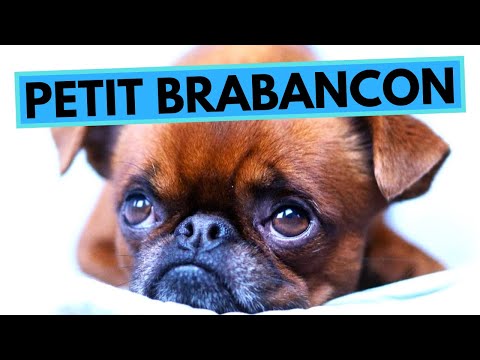

Watch this video on YouTube
Training and education of Petit brabançon
Despite the natural delicacy and developed intellect, Petit Brabancons still need a good upbringing from an early age. All the qualities inherent in them need to be developed, and how successful this process will be depends only on the owner.
The intelligence of the Brabant Griffon will serve as a good help during training. The main thing is to teach him to obey the learned commands to the starting (desired) signal. The training of puppies of this breed allows for some variety in terms of performance options. For example, commands regarding discipline should be clear. Other commands leave your pet the opportunity to think and take the initiative himself. The first group includes the command “Come to me!”. Without exaggeration, it can be called vitally important, since it allows you to stop the petit Brabancon in those moments when something can clearly threaten his life and safety – say, when he joyfully runs towards a moving car. The commands of the second type include “Walk!”. In this case, although the order comes from the owner, the Brabancon himself leads him there,
During training, it is necessary to ensure that the puppy learns: the command, as a certain signal, should lead to a clear result for him. For example, the kid should understand that if he correctly executes the commands, then a tasty treat and praise await him, but not ignoring or, even worse, physical punishment, even a light one, in the form of a slap.
When raising a Brabancon, one should not forget that, although he is small, he is a predator. All manifestations of aggression, the desire to bite or attack should be nipped in the bud so that an uncontrollable dog does not grow up. Representatives of this breed can participate in agility.
Competent training, taking into account all these nuances, will save you from difficulties in the future and at the same time help build a trusting relationship with your pet. A well-bred and trained petit-brabancon will surprise the owner more than once with his intelligence and resourcefulness.
Care and maintenance
Petit Brabancons do not belong to the “street” dogs, so life in a yard booth is not for them. These small companion dogs should be kept in a city apartment. A private house is also suitable, but only if it is cozy, warm and without drafts. Brabancon can be taught to go to the toilet “like a cat”, that is, in the pan. However, this does not eliminate the need to take the pet for a daily walk. Being outdoors is necessary for Griffons to keep themselves in good physical shape and is good for their mental health. Given the natural sociability, communication with other dogs is vital, and it is possible mainly during walks.
The Brabant Griffon does not need specific care: it is enough to brush the dog every day. Bath procedures should be arranged only as they get dirty. After bathing a pet, you should not leave the coat to dry on its own, it is better to dry it with a hairdryer so that the griffon does not freeze and catch a cold. For the same reason, it is not recommended to bathe him in the winter.
Brabancon ears need regular cleaning once a week. For this purpose, the usual 3% hydrogen peroxide solution is used. In the process of processing the auricles, do not penetrate deeply. In cases where an unpleasant odor is felt from the ears or dark crusts appear on their inner side, and the dog “fidgets” during cleaning, you should immediately contact your veterinarian. Such phenomena may indicate the onset of a serious illness, which will help get rid of properly selected treatment and good care.
Feeding the Petit Brabancon can be difficult as it is quite picky and will only eat the foods it loves. It is recommended that you immediately buy a special bowl for your pet on a bracket in order to adjust it as the dog grows to maintain posture. It is important to follow the diet, give food at about the same time, do not overfeed the Griffon. Until the age of 6 months, puppies are fed fractionally, 4-5 times a day, and then gradually reduce the number of meals to two.
If you plan to feed your Petit Brabancon with natural foods, include in your diet:
- lean meat (veal, turkey, lamb),
- porridge (rice, buckwheat, oatmeal),
- fruits and vegetables,
- eggs,
- boneless fish fillet
- cottage cheese, kefir, yogurt.
Be sure to add vitamin and mineral complexes to the main menu and watch the weight of Brabancon.
However, the vast majority of Brabant Griffon breeders opt for ready-made dry food. Super-premium and holistic class products are completely balanced in composition and do not require the purchase of additional dietary supplements. Petit Brabancons are ideal for “drying” for small, active breeds.
Health and disease of petit-brabancons
Petit Brabancon is one of the breeds that can boast of good health and a fairly long lifespan. However, this does not relieve dogs of risk factors that can lead to a deterioration in well-being. Let’s call them: improper care and feeding, neglect of prevention, contacts with sick animals.
Brabancons, as a rule, do not suffer from allergic diseases, however, they are characterized by congenital pathologies of the eyes and teeth, due to the peculiarities of the structure of the skull. Here is a complete list of these ailments: retinal atrophy (may also occur due to trauma, sometimes complicated by visual impairment and partial blindness); proptosis (prolapse of the eyeball, which is a problem for all snub-nosed dogs with a round skull); distichiasis (accuracy of cilia); inversion of the century; non-loss of milk teeth; cleft palate. The same list includes narrowing of the nostrils, a tendency to various viral, skin and fungal diseases, dislocation of the patella. It should be noted that in dogs of this breed, childbirth is difficult; they are prone to obesity.
In order to avoid many health problems, the little Brabancon needs to be vaccinated in a timely manner. The first vaccination should be given to a puppy at the age of 2 to 2.5 months. Before this procedure, you will need to drive out the worms from the body. Comprehensive vaccinations are optimal, allowing you to protect your pet from several diseases at once. After a month, it is necessary to re-vaccinate the puppy. After another 7 months, he must receive a rabies vaccination. Until the baby has been fully vaccinated, you should try to protect him from contact with unvaccinated dogs.
How to choose a puppy
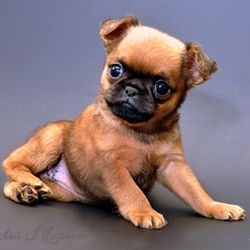

If the Petit Brabancon puppy is healthy and has no congenital anomalies, he behaves actively, shows curiosity. Potential buyers should be alerted by the sluggish demeanor and generally morbid appearance. The same applies to discharge from the puppy’s eyes or nose, dirty hair or a combed belly, not to mention the presence of parasites. From the acquisition of such a copy should be abandoned without hesitation.
Some people are ready to buy a sick puppy in the hope of curing it, especially since breeders offer such individuals at a reduced cost. Do not be seduced and do not succumb to such tricks! Treatment costs can be so significant that they exceed the cost of a healthy puppy.
When choosing a future pet, buyers want to determine what the quality of his coat will be in adulthood. The task is extremely difficult, but you definitely need to pay attention to color. For Petit Brabancons, a bright color is characteristic from birth.
Potential owners often ask themselves: at what age can a puppy of this breed be purchased? It is better to choose those who are already 2.5-3 months old. Usually, by this age, breeders already give the baby 1-2 vaccinations. But to find out for sure, be sure to check with the seller.
The price of a petit brabancon
The price of a Petit Brabancon is influenced by many factors, ranging from the degree of thoroughbredness of a puppy and the severity of prospects at exhibitions to the possibilities of breeding.
The average price of a Brabant Griffon puppy is from 500 to 1500$. The cost of show-class Brabancons can reach 1800$.





